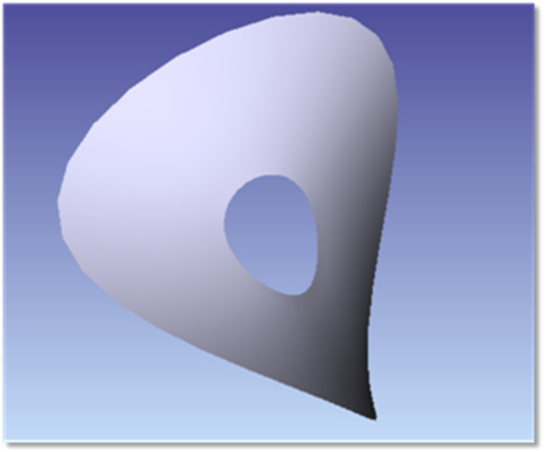Zernike Surface

A Zernike surface is defined by the following sag equation:
where c is the curvature of the surface, k is the conic constant, the α terms are aspheric coefficients, N is the number of Zernike coefficients in the series, Ai is the coefficient on the i Zernike Standard polynomial, r is the radial coordinate in lens units, ρ is the (optionally decentered) normalized radial coordinate, and ϕ is the (optionally decentered) angular coordinate. The Zernike Standard polynomials are defined in the table given in "Zernike Standard Coefficients". The surface supports specification of both a minimum and a maximum radial aperture; so annular surfaces may be defined.
The following parameters are used to define the Zernike surface:
| Parameter # | Description | Face Name | Face # |
| 1 | The radius of curvature. If this value is zero, then the curvature is assumed to be zero. | All Faces | 0 |
| 2 | The conic constant k. | All Faces | 0 |
| 3 | The maximum radial aperture in lens units. This aperture is also used to normalize the radial coordinates used in the Zernike polynomial expansion, unless the minimum radial aperture is negative, see below. | All Faces | 0 |
| 4 | The minimum radial aperture in lens units. This value may be zero. If this value is negative, then the minimum radial aperture is set to zero, and the absolute value of the parameter is used as the normalization radius. This feature allows a normalization radius distinct from the maximum radial aperture. | All Faces | 0 |
| 5-6 | The decenter of the Zernike terms with respect to the base asphere in lens units. | All Faces | 0 |
| 7-14 | The even radial aspheric coefficients α . | All Faces | 0 |
| 15 | Coefficients on Zernike polynomials 1-231, respectively, in units of lens units. Coefficient terms are provided in the file "Zernike Standard Coefficients". | All Faces | 0 |
| 16-246 | The Zernike coefficients. | All Faces | 0 |
Face Numbers: All faces Face 0. This object supports user defined apertures, see "User defined apertures".
Next:


